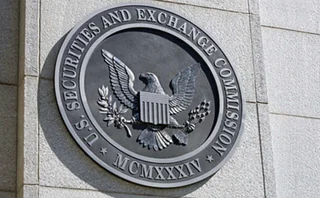
Libor’s legion of successors

The countdown to Libor’s demise is officially under way. On December 31, most settings, including sterling and yen, will cease. At the same time, widely used US dollar settings, which were granted an 18-month reprieve, will no longer be available for new business.
If a recent jump in Libor usage is anything to go by, regulators face a Herculean task prising dollar markets from the discredited rate by year-end. Exposures linked to US dollar Libor totalled $223 trillion at the end of 2020 – up from $199 trillion four years earlier, according to estimates from the Alternative Reference Rates Committee (ARRC), the Federal Reserve-backed group tasked with transitioning US markets off Libor.
In April, just 7.5% of US dollar swaps risk was traded on the secured overnight financing rate (SOFR), the Fed’s preferred Libor successor, according to the Isda-Clarus RFR Adoption Indicator.
The mission is complicated by huge swathes of the US lending market, which is yet to be convinced by SOFR. Many would prefer something altogether more ‘Libor-like’ – and the market seems determined to offer them a growing menu of alternatives to choose from.
At least three new benchmarks offer the credit sensitivity and term structure inherent to Libor. Lenders have already begun to adopt two of them: Ameribor and Bloomberg’s short-term bank yield index, or BSBY. IHS Markit recently made its credit bank funding benchmark live, and two more vendors are waiting in the wings.
While US regulators have been relatively quiet on the thorny issue of credit-sensitive rates (CSRs), criticism by their UK counterparts has ramped up. Speaking at a March 21 SOFR symposium, Bank of England governor Andrew Bailey warned that CSRs built on thin and incomplete markets failed to address the fundamental weaknesses of Libor.
“While these rates may offer convenience as a short-term substitution, they present a range of complex longer-term risks,” said Bailey. “The ability of such rates to maintain representativeness through periods of stress remains a challenge to which we have not seen adequate answers.”
The new breed of CSRs incorporate transaction volume thresholds to ensure they remain representative of the markets they aim to track – a central tenet of benchmark principles devised by global standard-setter the International Organization of Securities Commissions.
Many use multiday windows to maximise input data, though daily thresholds are as low as $1.5 billion for some settings. It’s an improvement on the $500 million of transactions estimated to underpin three-month Libor, but a far cry from the $1 trillion daily repo activity supporting SOFR. It’s also nowhere close to the $125 billion daily notional of futures transactions underpinning a three-month term SOFR rate, published by CME.
ARRC crowned the Chicago exchange group as the official provider of a forward-looking rate in May, but stopped short of a full endorsement, citing poor liquidity in cash and derivatives markets, which the industry group deems “essential to a robust and stable term rate”.
A list of market indicators for recommending the rate are largely aimed at bolstering over-the-counter liquidity, rather than the listed futures that actually underpin the CME rate. These include electronic market-making of SOFR swaps, changing US derivatives market-quoting conventions to the risk-free rate, and the development of SOFR-linked volatility products such as swaptions, caps and floors.
Understandably, regulators are keen to avoid a repeat of Libor’s past failings, where $200 trillion of risk teetered on $500 million worth of transactions. Endorsing term SOFR too quickly risks the derivatives-based rate being viewed as the primary vehicle for transition. Leaving it too late may risk lenders turning their backs on SOFR altogether. Pulling the trigger early may be the lesser of two evils.
Only users who have a paid subscription or are part of a corporate subscription are able to print or copy content.
To access these options, along with all other subscription benefits, please contact info@risk.net or view our subscription options here: http://subscriptions.risk.net/subscribe
You are currently unable to print this content. Please contact info@risk.net to find out more.
You are currently unable to copy this content. Please contact info@risk.net to find out more.
Copyright Infopro Digital Limited. All rights reserved.
As outlined in our terms and conditions, https://www.infopro-digital.com/terms-and-conditions/subscriptions/ (point 2.4), printing is limited to a single copy.
If you would like to purchase additional rights please email info@risk.net
Copyright Infopro Digital Limited. All rights reserved.
You may share this content using our article tools. As outlined in our terms and conditions, https://www.infopro-digital.com/terms-and-conditions/subscriptions/ (clause 2.4), an Authorised User may only make one copy of the materials for their own personal use. You must also comply with the restrictions in clause 2.5.
If you would like to purchase additional rights please email info@risk.net
More on Regulation
Large banks safer for CCPs than they get credit for
Plentiful pre-positioned liquidity softens the blow of resolution, new research argues
Basel uniformity fades as members defy dress code
Rule-makers diverge from Basel III standards, denting aims of comparability and fuelling fears over fair competition
Fate of US Treasury clearing deadline to be decided at crunch meeting
Isda chief predicts delay as clearing houses await confirmation of go-live dates
Value-at-risk models face neglect due to FRTB uncertainty
Some banks delaying material upgrades until timeline to replace VAR becomes clearer
CRR III hangs in the balance as member states push for changes
Top EU lawmaker rejects calls to water down capital rules, while others see room for manoeuvre
Looming US Basel endgame redraft sparks calls to save IRB
Experts say 20 years of data makes credit risk models more appropriate than standardised approach
Cool heads must guide financial regulation of climate risk
Supervisors can’t simply rely on ‘magical thinking’ of market discipline, says Sergio Scandizzo
Markets worry EU’s reporting simplification will add to burden
Rather than reducing firms’ obligations, market participants fear it could end up increasing requirements








